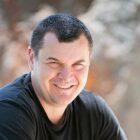Project area/S
- Fast Transients and Pulsars
Project Details
In 1962, Armenia physicist Gurgen Askaryan proposed using the Moon to detect the highest-energy particles in Nature, the ultra-high-energy cosmic rays. The origins of these mysterious particles are not known, and their rarity – one per 100km2 per year – requires a gigantic detector. By using a radio telescope to search for the nanosecond bursts of radiation when these particles impact the Moon, the entire visible Lunar surface – 20 million km2 – could be turned into a particle detector.
The Moon, however, is very far away^(citation needed), and only now is there a telescope with the sensitivity to detect these interactions – FAST. The Five-hundred-metre Aperture Spherical Telescope in China for the first time will allow these particles to be detected – or so we think! Estimates of sensitivity currently ignore lunar surface roughness, and its effects on the outgoing signal. The aim of this project is to tune an existing program to estimate the average effects of the rough Lunar surface on Askaryan radio pulses, and determine whether or not FAST will be sensitive to such signals – and motivate an observation.
Student Attributes
Academic Background
Any physics, astronomy, computing, or engineering/electronics would be equally suitable for this project.
Computing Skills
C++ and python would be useful, but not essential.
Training Requirement
LaTeX, introductory python/c++, and standard HPC/Garrawarla usage.
Project Timeline
- Week 1 Inductions and project introduction
- Week 2 Initial Presentation
- Week 3 Introduction to simulation software
- Week 4 First program runs: understanding input and output
- Week 5 Implementation on Pawsey system for parallel computation
- Week 6 Testing: simple examples (smooth surfaces and null ‘inter-faces’)
- Week 7 Program runs: effects of surface roughness
- Week 8 Analysis: telescope sensitivity and event detectability
- Week 9 Final Presentation
- Week 10 Final Report
